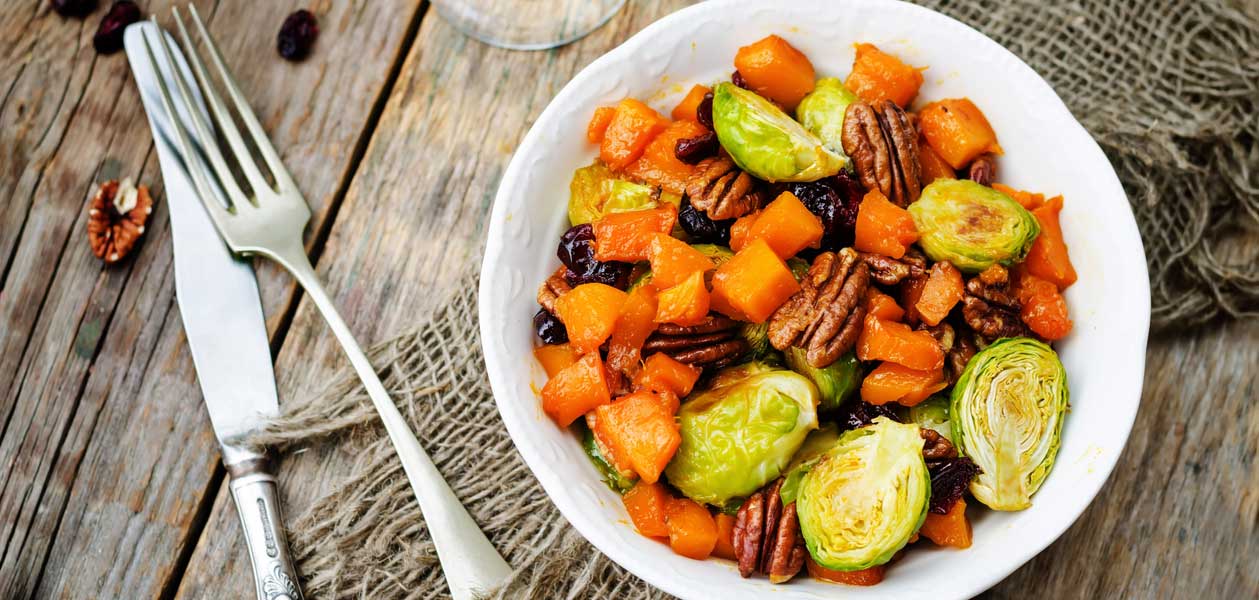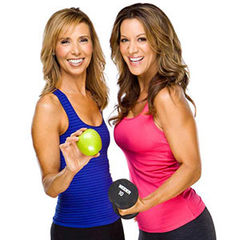Does the constant stream of holiday parties have you worried your jeans won’t fit on January 2nd? While it’s true that the average person can gain between 4 and 7 pounds during the holiday season, the fear of weight gain shouldn’t keep you from going out, having fun and making some memories. And don’t be afraid to eat. You’d be surprised how many foods are actually healthy and worthy of a second helping.
PROTEIN – Turkey is probably the most popular protein-rich food during the holidays, but chicken, fish and beans are also excellent choices. Protein takes longer to digest, so it will keep you fuller for longer. It also helps to stabilize your blood sugar level, keeping insulin in check and preventing those wild swings in blood sugar levels that have you raiding the cookie jar. If you’re new to roasting a turkey, it’s actually pretty easy to do. Make sure to add lots of fresh herbs to your turkey, which will give it plenty of flavor. If you’re intimidated at the idea of cooking a whole bird, you can roast just a turkey breast. A 4-ounce portion contains 28 grams of protein.

VEGETABLES – Low in calories and high in belly-filling fiber, vegetables are your go-to when you need to fill up. Start with some veggies and hummus or salsa, and fill half of your plate with any cooked vegetable that’s not sitting in a cream or cheese sauce. Better yet, make a healthy vegetable dish and bring it to the party so you know there will be something that you can enjoy. Broccoli, Brussels sprouts, cauliflower, carrots, kale and turnips are all in season this time of year. Aim for at least two different colored vegetables on your plate.
SALAD – Like veggies, salad is a fiber-rich way to fill up without filling out. Skip the salads that are rice- or pasta-based and swimming in a creamy dressing. Instead, load your plate with a greens-based salad that’s brimming with vegetables and nuts. Pass on the croutons, crunchy noodles and creamy salad dressings. Get out of the iceberg or romaine lettuce rut and try peppery baby arugula, kale or sweet butter lettuce. Layer these greens with vegetables of different colors and textures, as well as some nuts or seeds and a light vinaigrette. Try this salad that features arugula and in-season pears.
POMEGRANATES – These ruby-colored sweet and tart arils (a.k.a., seeds) contain powerful antioxidants called punicalagins, which are found in the juice and peel of the fruit. More powerful than green tea, red wine and cranberry juice, the antioxidants in pomegranates can help lower low-density lipoprotein levels (LDL, the bad cholesterol) and blood pressure, inhibit tumor growth, reduce oxidative stress and may improve memory and exercise performance. Add the arils to salads, cook them with chicken or make a smoothie with pomegranate juice.

PUMPKIN – This seasonal fruit (yes, it’s a fruit because it has seeds) is high in fiber and the antioxidants beta-carotene, lutein and zeaxanthin, which protect against cataracts and macular degeneration. Pumpkin and its winter squash cousins—acorn and butternut squash—can be used to make soup, cubed, roasted and eaten as is, or mashed with some cinnamon and a little orange juice. Canned pumpkin (not pumpkin pie filling) can be used in smoothies, pie (or make a crustless pumpkin pie), puddings, breads and muffins. Pumpkin seeds are also excellent sources of healthy fats, magnesium and zinc. Enjoy them on a salad or as a snack. Shelled pumpkin seeds, called pepitas, are the green seeds found within the white seeds inside a pumpkin.
Healthy holiday foods are easy to find as long as you can push past the mashed potatoes, cheesy baked pasta and dinner rolls. Fill your plate with brightly colored vegetables, lean proteins and a small amount of healthy fats for a macro-balanced plate that will leave you full and satisfied.




 by
by 






 by
by